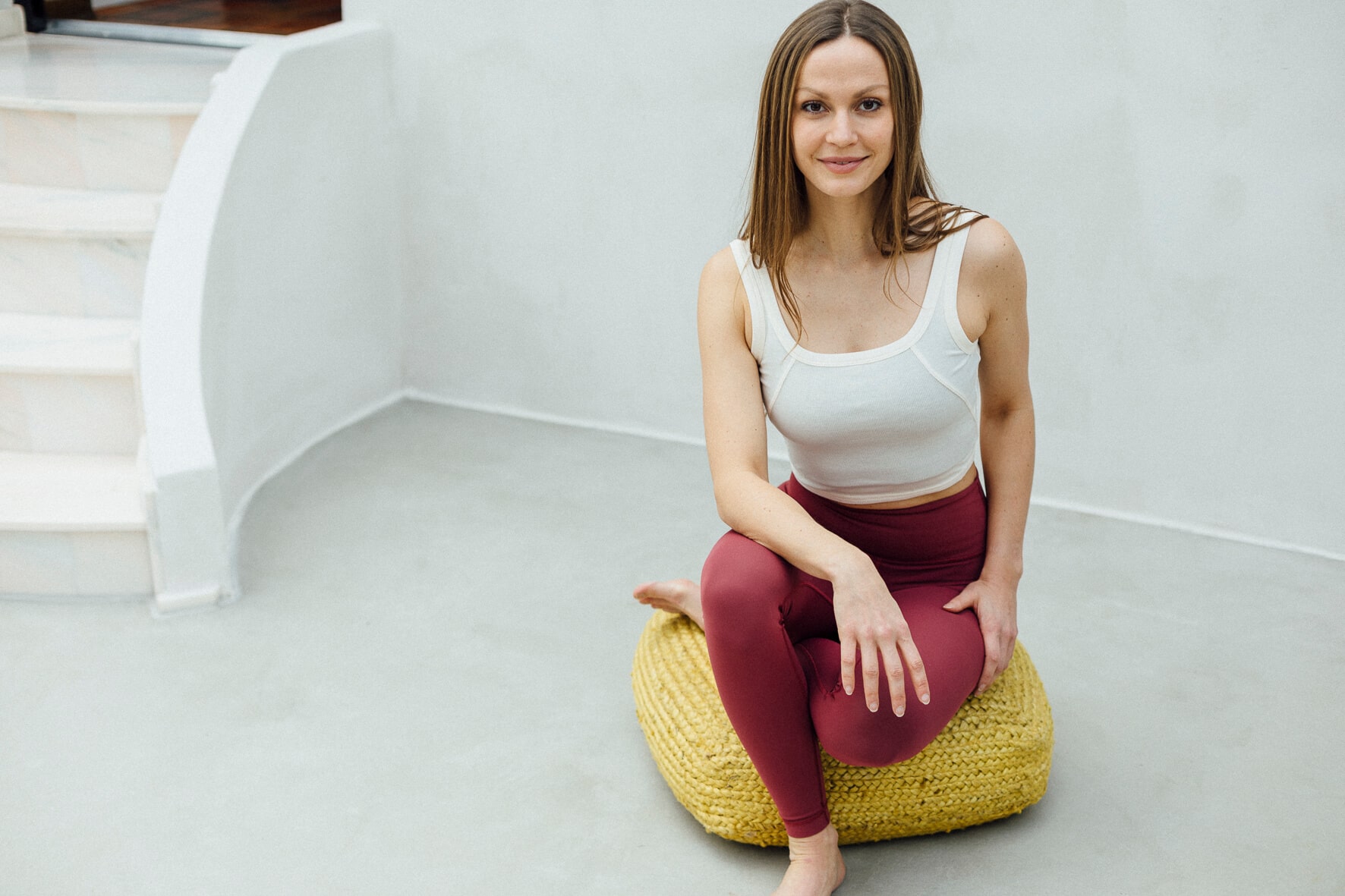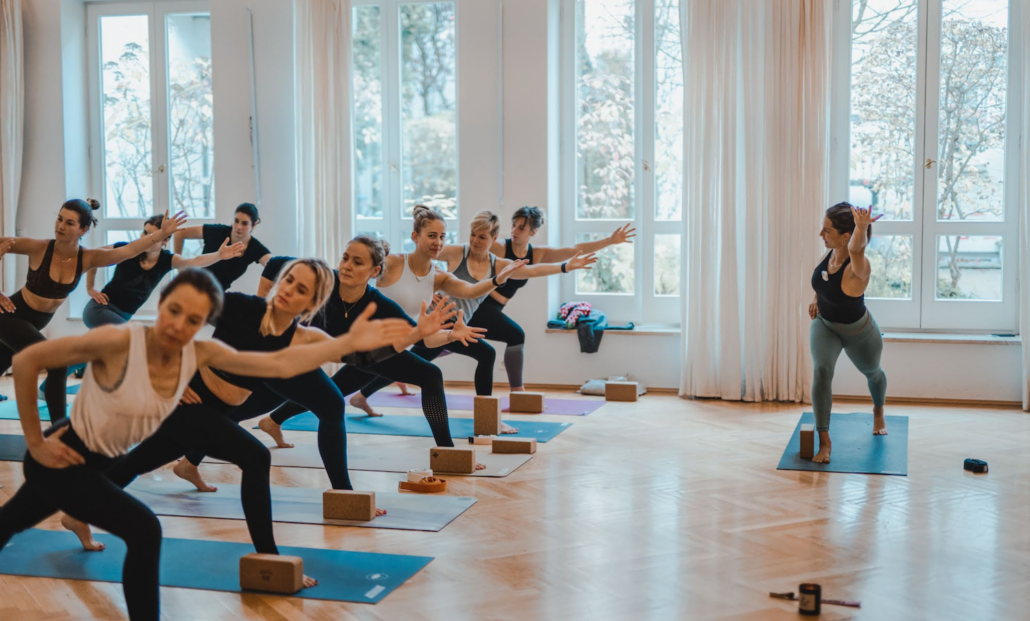In the following article Cherishing the Sweetness of Life – Meet the Tribe Benedetta Chiumenti, I am talking with Bene about the importance of accepting your body and how we are all on our own individual Yoga-Journey. Bene’s classes are special to me. Maybe I’m biased, because I think she is an amazing women and I enjoy the bubbly morning convos we always have before her Wednesdays Yoga Flow. Moreover though, she always gives me the feeling that my practice and my body are just right the way they are, that I am exactly where I am supposed to be in my journey. Hereby, I find rare moments of allowing myself to let go of my perfectionist standards just breathing and feeling through the flows she leads.
A „dolce far niente,“ which does not mean to lie around literally doing nothing, but captures this amazement and enjoyment of life.
As I’m writing this interview, I am sitting at lake Garda, marvelling over the beautiful Nature and this jovial Italian flair. It always makes me unbelievably infatuated with my life, more than I already am. Maybe it’s captured best in the saying „Dolce far niente,“ meaning „the sweetness of doing nothing“. This Italian saying immensely resonated with me while watching the classic „Eat pray love“ just a few days ago. A lot of people, I included, seem to be always rushing places. We always want to be at the finish line already, meanwhile forgetting the amazing journey life holds for us. Thereby we are overseeing the beauty that lies in those small, at first glance inconvenient moments. However, those often overlooked instants make life to this fragrant journey it is.
Cherishing the Sweetness of Life – Meet the Tribe Benedetta Chiumenti
Benes classes capture this sweetness life beholds, which lies in at first glance unspectacular but beautiful moments, that come to the surface when you stop rushing and arrive within yourself. A „dolce far niente,“ which does not mean to lie around literally doing nothing, but captures this amazement and enjoyment of life. In Bene’s classes, you are breathing consciously through every moment and cherishing all the tiny steps of your journey. Meet the Tribe Benedetta Chiumenti!
R: So I am just going to ask you a few questions about your journey to Yoga. What I am trying to find out is what makes you unique as a Yoga Teacher.
B: I think it will be quite different from others, my journey to Yoga because I didn’t have some calling or anything. Just my shower broke down in China, and it was either getting boiling water that you can’t even put a finger under or cold. There is no central heating in apartments in China, so the idea of spending the winter in cold showers was not in the plan. Downstairs from my home, in the same building, there was a super lovely Yoga Studio that belonged to the owner of a club I used to go to.
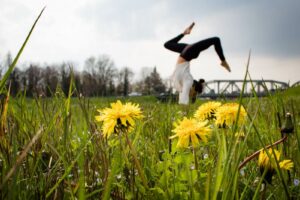
„The moment I started getting into Yoga, I realised that the benefits were not only physical, but my mental health was doing a lot better.“
I knew that they had nice bathrooms to have showers. At that time, I was doing an internship in a small P.R. Firm. I was looking for partners, and I tried to have the Yoga Studio partner up for an event. When I asked the owner, she said: „Sure! And then you can come for a two-week trial“. I was like, „Perfect!“ because it was exactly those two weeks that it took for the shower to be fixed.
R: So before that, you didn’t have anything to do with Yoga? That was your first encounter?
B: Yeah, yeah. I used to do gymnastics as a kid. Then I used to do a little bit of Pilates, at the Gym in Italy I used to go to, while I was a student. The moment I started getting into Yoga, I realized that the benefits were not only physical, but my mental health was doing a lot better. Not an inspiring Yoga Story. (laughing)
R: But it is a hilarious story! I think it’s the most comic I have heard. Ever. (Laughing)
So you started off with this Vinyasa Ashtanga Class? That was in China?
B: Yes. That was in China. It was 2010.
Meet the Tribe Benedetta Chiumenti: „I would do one or two classes per day, to really understand what style I like and what teachers I like.„
R. Where in China was it?
B: In Shanghai. I also did my Teacher Training at that Studio. Three years into my more than daily practice – because I was freelancing initially, so I had tons of time. I would do one or two classes per day, to really understand what style I like and what teachers I like. In 2013, they announced that 4 of my favourite teachers, people that had been guiding me through practice and that I learned from for the past few years, would do a teacher training together in the Studio in Shanghai outside of working hours.
R: Was it an Ashtanga Training?
„But the most important thing is the connection with the people that you practice among.„
B: It was a mix of a little bit of everything. So, no. Ashtanga Poses sure, but not Ashtanga based. So not the same way of counting and teaching how to assist Mysore Style. One of the teachers was an Anusara Certified teacher. She had this very nice way of explaining curves and how the body works, and that was the anatomy bit. Then we had very very nice Hatha Teachers who explained everything that was related to assisting and alignment. Which was great, and then we had this Chinese lady, my first teacher. She, in the meantime, had gone to India and studied with Iyengar.
R: Wow!
B: The brother. The other Iyengar.
R: Ah, okay!
B: But still, wow. She studied with both Iyengars. But the second Iyengar, she learned Kundalini from. And she came back very much into Kundalini, so she was teaching a lot of Pranayama and a lot of Kundalini in a very non-Kundalini way, I have to say. I think she liked to make things her own, which was great because I’m not a big Kundalini white Cloth fan.
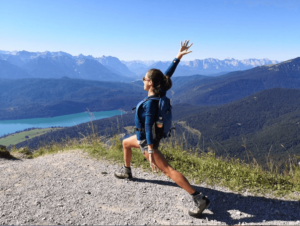
„The first 5 minutes, I was like, „omg, what do I do.“ So I just told them, „start sitting and breath.„
We also had an Indian teacher from Kerala, and he was doing everything that was Philosophie related. Then we had a Chinese Tai Chi Master who gave us Tai Chi lessons on the Weekend to understand the difference between Yoga and Tai chi. And then, we also had a traditional Chinese Medicine tutor, who taught us the basics of the Chinese Thai Massage, called Tui Nah.
R: How did you come to teach then?
B: At the end of my training, I kept going to classes. One evening after work, I went to practice and one of the teachers that were supposed to teach the class was nowhere to be found, and the class was about to start. Then they said: „Okay, Bene know you are a teacher you can teach the class.“ I was like, do I have a choice? The studio owner said: „just think of it like Karma Yoga.“ And I was like, „okay..“ (laughing). The first 5 minutes, I was like, „omg, what do I do.“ So I just told them, „start sitting and breath.“
„Even though the class was in German, it was perfect, and the sequence was perfect, and I then sent here a super Fan-Girl massage.“
R: How did you come to Kale&Cake then?
B: How did I come to Kale&Cake? (thinking) I think I went to one class from Sinah before Corona, before everything. Her class resonated with me because it was a style that I knew very well. It reminded me so much of one of my teachers. Because Sinah learned from Simon and one of my teacher’s Chops, he was assisting Richard Freeman in China for translations, some of the things they had from Richard resonated with me from Sinahs Class. Even though the class was in German, it was perfect, and the sequence was perfect, and I then sent here a super Fan-Girl massage.
„Like calm down and realize what the right things to get mad at are, trying to be less impulsive sometimes. Yoga was the first thing that helped me.„
R: What would you say Yoga means to you?
B: Balance. I am pretty intense, and it helps me chill. Like calm down and realize what the right things to get mad at are, trying to be less impulsive sometimes. Yoga was the first thing that helped me. That’s why I decided to continue and dive deeper into the practice. But the most important thing is the connection with the people that you practice among. The students with your teachers and if it wasn’t for Yoga, I surely would have a lot less friends. That is a very nice byproduct of something that is already so good for you as an individual. The fact of this really nice connection and community feel that Yoga gives you is unique. So it’s the balance it helps me keep in my head and the connection as well as the community.
R: I agree.
B: I think my practice gives me balance, and my teaching gives me the connection that otherwise would be difficult for me to attain. Especially the last year, 2020 to 2021, would have been a really, really different time if I hadn’t had the opportunity to practice and teach. I think that saved me quite a lot of nervous breakdowns.
„You’re not the same as somebody else, and to treat Yoga as your own personal journey.„
R: Would you say that is also something you want to transmit to your students when teaching, or what would you say is your central aspect of teaching?
B: I think surely the connection with yourself, with your breath with the people who share the same moment, is something that I always try to bring to my students and acceptance. That, I think, is the first step to start a journey that is not always easy, is to accept that you are not always the same one day to the next. You’re not the same as somebody else. And to treat Yoga as your own personal journey, I think that is something that I try to stress quite a lot in my classes.It helped me especially with this Instagram life where it seems like everyone is perfect, has a perfect life, can put their foot behind the head, and can practice in a thong without having any cellulite.
„The difference between good pain and bad pain is only understanding and accepting your body.„
That is not real, and accepting that you are just the way you are. You can improve, of course! But there are some things you have to accept. Realising that is very important. Also, that listening to your body is essential. So once you start accepting, you will not overdue or injure yourself. You will understand the difference between your pushing too hard, or you’re not pushing enough. The difference between good pain and bad pain is only understanding and accepting your body.
I don’t know if it comes out in my classes, but that’s what I want to teach my students.
R: Absolutely! I mean I haven’t practiced with you in a bit, because when you have your class I am either working or I am so tired that I am sleeping. (laughing) But whenever I am taking one of your classes, I feel so connected to my body and my breath. Really cherishing those little moments, happening in transitions, and understanding what my body needs.

„Before I couldn’t escape it and know I’m like, „Hi Mat – I’m going to have a Coffee.“ (laughing)
B: I think it is this sedentary life. Because it used to be so easy for me to get up and get on my mat and know it’s easy if I book a class with somebody. But before, I didn’t need to book a class; I would do my practice. Even if it was just a minimum prescription of a couple of sun salutations and a couple of stretches. Or Padanghustasana that always reminds me to pull my trapeze and to pull a little bit more and to understand what is going on. Like that used to be so easy, and since Covid, that’s difficult even. Even if my mat is by my bed. Before I couldn’t escape it and know I’m like, „Hi Mat – I’m going to have a Coffee.“ (laughing)
R: (laughing)
B: But that is also part of accepting your journey. Sometimes you just don’t want to do it.
R: Absolutely: I think that is also something I’m working on at the moment, to give my body a break. I’m really good at pushing over my boundaries and telling myself that although I’m tired, I’m going to do it anyway.
B: It always feels good when you do it.
„…sometimes just to sit and drink wine and eat Pizza.“
R: Yeah, it always feels good when you do it, but I have the feeling that sometimes I also overdo it. That is what I have to find for myself, the right balance.
B: I think you have to give yourself the permission to have a break and listen to the couch potato in you! It’s okay sometimes just to sit and drink wine and eat Pizza. Maybe for me, that happens a little too often (laughing), but it is also okay to be lazy. It’s pretty normal.
Meet the Tribe Benedetta Chiumenti: Bene’s Wednesday Morning Yoga Flow I 7.15 – 8.15h Live Online via Zoom or as a Video On Demand.
[button url=“https://www.kaleandcake.de/livestreams/“ ajax=“0″ size=“xlarge“ radius=“0px“ color=“rgba(139, 152, 144, 1)“ border=“{{border}}“ bgcolor=“rgba(213, 230, 216, 1)“ target=“_blank“ name=“Practice with Bene“]
Meet the Tribe Benedetta Chiumenti: Hier kommst du zu Bene’s 15 min. Morning Vinyasa Flow auf Youtube.
Artikel und Interview: Raphaela Baumgartner
